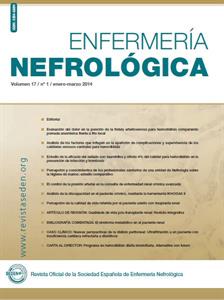Contenido del artículo principal
Resumen
La Dependencia Funcional se defi ne como la pérdida de autonomía física, psíquica o intelectual a causa de procesos relacionados con la salud del individuo. La discapacidad es un atributo inseparable de la dependencia, pero no recíproco. La dependencia funcional es el resultado de una discapacidad, pero no todos los discapacitados tienen dependencia funcional puesto que no precisan ayuda de terceros. El objetivo del estudio es valorar la discapacidad y dependencia funcional y comparar los resultados obtenidos mediante el Índice de Barthel, con los obtenidos según el World Health Organization Disability
Schedule versión 2 y relacionarlos con una variable predictora de dependencia funcional como el Índice
de Comorbilidad de Charlson modifi cado por edad para evaluar la congruencia de ambas medidas.
Material y método
Estudio epidemiológico de corte trasversal.
Resultados
Analizando conjuntamente los valores de Índice de Barthel y World Health Organization Disability
Schedule versión 2 con el Índice de Comorbilidad de Charlson modifi cado por edad obtuvimos que si bien ambas correlacionan signifi cativamente con la comorbilidad (p<0,05), parece que la dependencia funcional lo hace con mayor fuerza que la discapacidad.
Conclusiones
La medida de la discapacidad y su adscripción y tabulación en una clasifi cación como la Clasifi cación Internacional
del Funcionamiento, la Discapacidad y la Salud nos permite identificar de forma precoz áreas de discapacidad
física, psíquica o relacional que en un futuro pudieran abocarse a dependencia funcional.
Schedule versión 2 y relacionarlos con una variable predictora de dependencia funcional como el Índice
de Comorbilidad de Charlson modifi cado por edad para evaluar la congruencia de ambas medidas.
Material y método
Estudio epidemiológico de corte trasversal.
Resultados
Analizando conjuntamente los valores de Índice de Barthel y World Health Organization Disability
Schedule versión 2 con el Índice de Comorbilidad de Charlson modifi cado por edad obtuvimos que si bien ambas correlacionan signifi cativamente con la comorbilidad (p<0,05), parece que la dependencia funcional lo hace con mayor fuerza que la discapacidad.
Conclusiones
La medida de la discapacidad y su adscripción y tabulación en una clasifi cación como la Clasifi cación Internacional
del Funcionamiento, la Discapacidad y la Salud nos permite identificar de forma precoz áreas de discapacidad
física, psíquica o relacional que en un futuro pudieran abocarse a dependencia funcional.
Palabras clave
dependencia funcional; discapacidad; índice de barthel; who; das ii; índice de comorbilidad de charlson; hemodiálisis.
Detalles del artículo
Licencia
Aviso de derechos de autor/a
© Los autores ceden de forma no exclusiva los derechos de explotación de los trabajos publicados y consiente en que su uso y distribución se realice con la Licencia Creative Commons Atribución - No comercial 4.0 Internacional (CC BY-NC 4.0). Puede consultar desde aquí la versión informativa y el texto legal de la licencia. Esta circunstancia ha de hacerse constar expresamente de esta forma cuando sea necesario.
Cómo citar
1.
Rebollo Rubio A, Cabrera Azaña S, Pons Raventos ME, González Castillo JA, Pinilla Cancelo MJ, Mansilla Francisco JJ. Análisis de la discapacidad en el paciente crónico mediante la herramienta WHODAS II. Enferm Nefrol [Internet]. 2014 [consultado 13 Dic 2025];17(1):[aprox. 6 p.]. Disponible en: https://www.enfermerianefrologica.com/revista/article/view/4231




